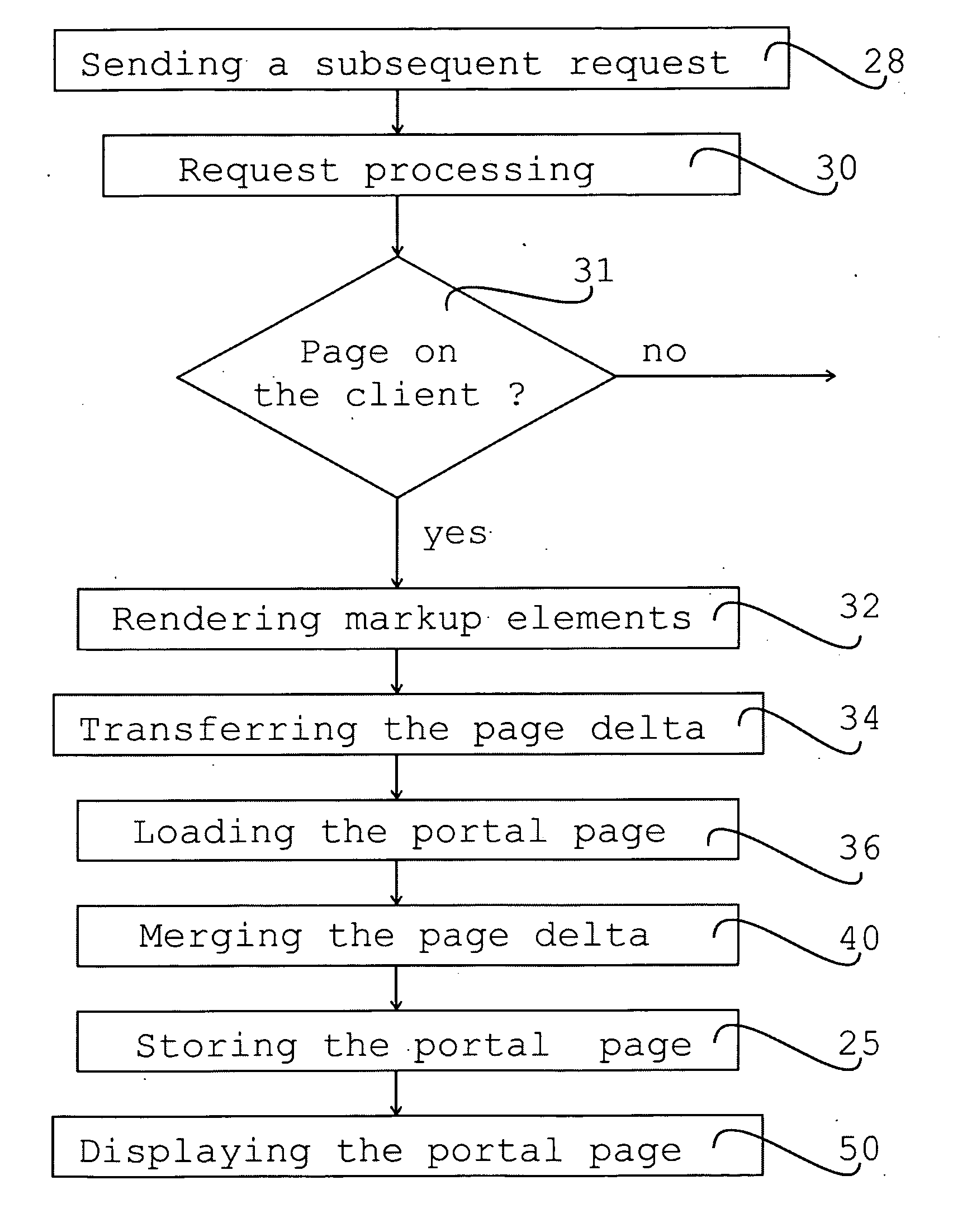Method for rendering and refreshing a portal page
a technology for portal pages and portal applications, applied in the field of portal page rendering and refreshing, can solve the problems of slow server-side processing time for rendering pages, high data flow between servers and browsers, and inability to refresh individual page parts, so as to reduce the number of merge operations on the client side, reduce data transfer, and reduce the overall performance of the portal application.
- Summary
- Abstract
- Description
- Claims
- Application Information
AI Technical Summary
Benefits of technology
Problems solved by technology
Method used
Image
Examples
Embodiment Construction
[0027]FIG. 1 shows an example for the structure of a typical portal page, which allows the application of one embodiment of the present invention. The portal page has a hierarchical structure of page elements 10, 12 and 14. In the depicted example, the portal page includes navigation elements 10, layout elements 12 and portlets 14.
[0028] In the first two levels of the tree structure, the portal page includes nested layout elements 12, e.g. horizontal panels. In a third level, the portal page comprises two layout elements 12 and a portlet 14. In a forth level, the portal page comprises one navigation element 10, e.g. for page navigation, one layout element 12, and three portlets 14. The page elements of one level correspond with another page element in the next lower level.
[0029]FIG. 2 shows a flow chart of another arrangement of the present invention. In a first step 20 the client sends an initial request for a given portal page to the server. In a further step 21, the portal appl...
PUM
 Login to View More
Login to View More Abstract
Description
Claims
Application Information
 Login to View More
Login to View More - R&D
- Intellectual Property
- Life Sciences
- Materials
- Tech Scout
- Unparalleled Data Quality
- Higher Quality Content
- 60% Fewer Hallucinations
Browse by: Latest US Patents, China's latest patents, Technical Efficacy Thesaurus, Application Domain, Technology Topic, Popular Technical Reports.
© 2025 PatSnap. All rights reserved.Legal|Privacy policy|Modern Slavery Act Transparency Statement|Sitemap|About US| Contact US: help@patsnap.com



